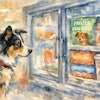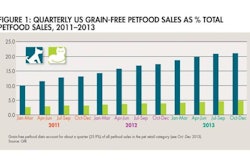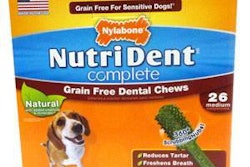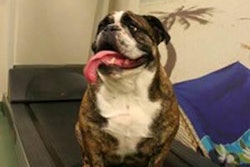.png?auto=format%2Ccompress&q=70&w=400)
European supplier of proteins and fats seeks to add value to food chain
Though worldwide prices of agricultural raw materials-including key petfood ingredients such as corn, rice, animal proteins and fats-have declined in recent months, dramatic increases in the first half of 2008 cascaded to the food and feed chain, resulting in higher prices for foods like pasta, bread, milk, meat as well as petfood.
A number of factors seem to be responsible for the situation, and their effects are still under debate: systemic causes like droughts in grain producing nations, increased demand for meat in developing countries, diversion of farmland or crops for biofuels production, structural changes in trade and more.
The price tension on the market generated by high demand was reinforced in the past years by poor harvests and record oil prices, which also induced escalating energy, transportation and ingredient costs. In short, several industries are competing for the same raw materials and are affected by costs that possibly will rise again as a result of joint increasing demand from food, feed and fuel production.
Increased competition
The greater market interest in animal proteins and fats has increased the competition among players in this segment, according to Sonac, a leading European supplier of ingredients derived from slaughter by-products. This competitive situation has reduced the availability of certain raw materials frequently used in petfood.
Sonac, together with business units Rendac, Rousselot and Ecoson, is part of the Ingredients division of the Vion Food Group, an internationally operating group based in the Netherlands that produces high-quality foods and ingredients for humans and animals. Besides Vion Ingredients, the group's divisions include Vion Fresh Meat, Vion Convenience and Vion UK. The Ingredients division focuses on optimizing the marketing of slaughter by-products, processing them into ingredients for a variety of applications, including food, petfood, animal feed, aquaculture, pharmaceuticals, photographic, fertilizer and technical products.
Sonac collects and processes slaughter by-products exclusively from animals approved for human consumption (category three material according to European Union, or EU, regulations). Under precise conditions these materials can be placed on the market. By doing so, Sonac adds maximum value to all animal by-products released in the meat chain, according to the company.
Direct guarantees
Sonac aims to be a versatile partner able to supply a wide range of reliable ingredients of animal origin. All its products are produced in various Sonac factories so customer needs such as continuous supplies, quality control, tracking and tracing systems are directly checked and guaranteed.
The plant in Burgum, Netherlands, is the largest European category 3 processing plant. It has a meat meal line (pork and bovine), a poultry line, a blood line, a bone meal line and lines for feathers and pighair. (This end product is not used in petfood due to very poor digestibility but is suitable for fertilizers). About 100 people work at the Burgum plant. Sonac also has facilities in the Netherlands and Belgium, plus subsidiaries in France, Germany, Spain, Poland and Italy.
The Western European petfood sector is a major buyer of Sonac products manufactured from animal-based raw materials like protein meals, fats and minerals (e.g., phosphates from bones). All can be sourced from Sonac as in a kind of one-stop-shop. Producers of wet petfood or snacks can find a variety of specific products like fresh or frozen organs and carcasses (livers, lungs, hearts, necks), skins (for rawhides treats) and gelatin-based products like binders (for semi-moist treats), which are produced by Rousselot.
According to Sonac, its variety of products, combined with ongoing product innovation and the ability to supply tailored products, are of great importance to customers. Its production line specialization and geographical spread mean more accurate separation of raw materials, separate product-specific production lines with resulting higher level of control and the opportunity to fulfill demand for specialty or single-species products.
At the same time Sonac is able to meet customers' request for high value ingredients-for example, ones with functional properties-or offer cheaper alternatives like mixed meals when producers need to control increased costs. The company can also work with customers to evaluate and develop raw materials best fitting their requirements.
Protein alternatives
"Petfood players are facing unprecedented challenges highly connected to the raw material issue," states Geert van der Velden, sales manager. Petfood companies need flexible, reliable partners enabling them to fulfill customer requests such as finding alternative solutions, diversifying for competitive advantage, being more creative and looking for a "second generation of raw materials," van der Velden adds. By offering R&D cooperation and involving customers in every stage of the product development process, Sonac intends to be that kind of partner and to create strong long-lasting business relations, he says.
This is especially true when materials that were available in the past are not as obtainable or have increased greatly in price. For example, Kerapro is a newly developed product from feathers, with much better quality, improved digestibility and bioavailability than feather meal, says Jarig Komrij, sales manager for dry petfood. It's also high in protein and low in ash content.
In Sonac's view, innovation also includes picking up on trends and market opportunities, so the company is closely watching the hypoallergenic market. Although Sonac still has "exotic" protein sources such as lamb and duck meal in its portfolio, it's looking at what it considers the next and best solution: hydrolized proteins.
These proteins-also called peptides-are cut in small pieces so the body does not recognize them as proteins and the allergic reaction does not occur. "Then we look to functionality," says van der Velden, citing examples such as plasma powder and gelatin based binders. "We are also focusing on gelatin hydrolizates for joint problems, an alternative to traditional products like chondroitin sulfate. Our hydrolizate has the advantage in that it can be used as a hypoallergenic ingredient and also has positive effects for the joints."
Quality and safety are key
Product quality, safety and traceability are key items in these processes and of crucial importance in the EU petfood market. Sonac works with state-of-the-art control equipment and adheres to several quality programs such as HACCP, GMP+, ISO 9001 and ISO 14001, fulfilling national and international regulations and legislation.
"The big players usually visit our factory once a year," says Komrij. "Their research people know exactly what happens in our factory or what kind of raw materials we process, how they are produced. They know everything, included the critical control points of our factories.
"Next to fulfilling the high safety and quality standards of the petfood industry, we are now going for something more," Komrij continues, "trying to put additional attention on freshness, palatability and digestibility of our raw materials, all measurable and of critical importance to our customers."
















